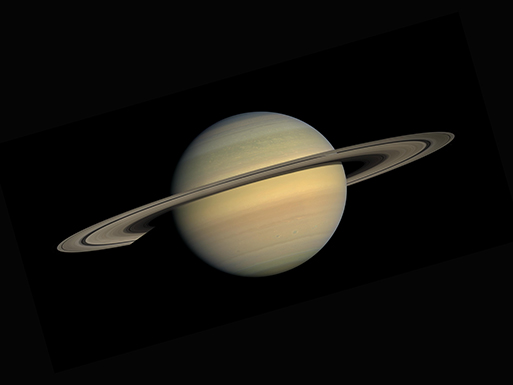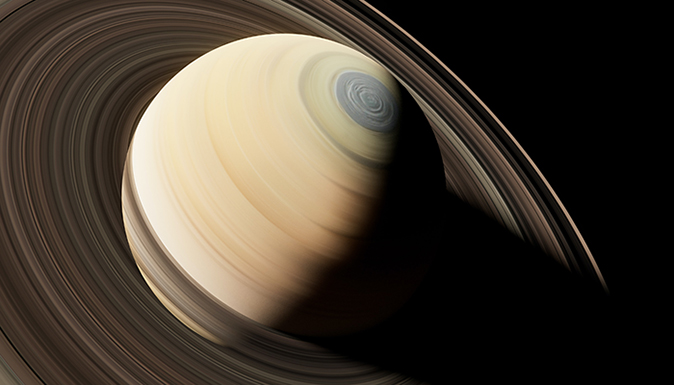


The giant planet Saturn, with its flat rings, is probably the most widely recognized astronomical image. For the classical world, Saturn was the most distant known planet. They named it after the original father of all the gods. Early astronomers noted its 29-year orbit and assumed that it moves sluggishly. Composed mostly of hydrogen, its atmosphere and structure are similar to Jupiter's, but its density is much lower. Saturn is so light that it could float on water. Like Jupiter, Saturn rotates at great speed causing its equator to bulge outward. Saturn also has an appreciable magnetic field. Winds in its upper atmosphere can travel at l100 mph (l800 km/h) but major storms are rare. White spots tend to develop during Saturn's northern-hemisphere summer, which happens every 30 years or so, the last being in 1990.


Though Saturn's rings look solid from Earth, astronomers have known since the 19th century that they cannot be. In fact, they consist of countless individual particles, made of ice and dust, ranging in size from specks to hundreds of yards. The rings are only about 100 ft (30 m) thick, but their total width is more than 169,000 miles (272,000 km).